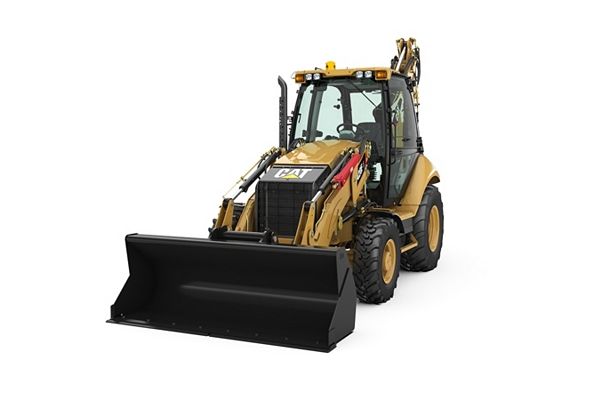Aerial Lift Rental for Construction and Maintenance Projects
Aerial Lift Rental for Construction and Maintenance Projects
Blog Article
Renting Vs. Acquiring Building And Construction Equipment: Making the Right Choice for Your Task
When getting started on a construction job, one of the crucial decisions that project stakeholders and managers face is whether to buy or rent out building and construction equipment. The decision pivots on various variables such as cost considerations, job duration, devices maintenance, scalability, risk, and adaptability administration.
Cost Factors To Consider
Leasing devices usually requires lower first payments compared to acquiring, making it an appealing option for temporary tasks or professionals with budget constraints. In the lengthy run, consistently leasing equipment can gather greater costs than purchasing, particularly for prolonged jobs.
On the various other hand, getting construction equipment involves higher ahead of time expenses but can lead to long-term cost savings, especially for long-lasting jobs or constant users. Possessing devices provides adaptability, benefit, and the possibility for resale value once the job is completed. Furthermore, possessing equipment permits personalization and experience with details machinery, potentially boosting efficiency and efficiency on-site. Eventually, the choice in between leasing and purchasing building devices rests on the project's period, regularity of use, budget factors to consider, and long-lasting financial goals.
Job Period

On the other hand, for long-term projects or continuous construction work, purchasing devices can be the a lot more affordable choice. Buying equipment can bring about set you back savings in the future, specifically if the tools will certainly be regularly utilized. Additionally, having equipment provides a feeling of control over its accessibility and allows for personalization to fit certain job demands.

Devices Upkeep
Given the crucial function job period plays in determining one of the most economical strategy in between renting out and buying construction equipment, the emphasis now moves towards examining the crucial element of equipment maintenance. Correct upkeep is vital for making sure the optimal performance and longevity of building and construction devices. Leasing tools usually features the advantage of having actually well-kept equipment supplied by the rental business. This can minimize the concern of upkeep tasks from the project proprietor or contractor, saving time and initiative. On the other hand, having tools needs a positive approach to maintenance to stop breakdowns, make certain security, and extend the tools's lifespan. Normal examinations, servicing, and prompt fixings are needed to keep owned and operated devices in top working condition. Consider upkeep prices when determining in between purchasing and renting, as neglecting maintenance can lead to costly repairs, downtime, and task hold-ups. Inevitably, a well-maintained building and construction devices fleet, whether rented out or owned, is essential for the effective and successful conclusion of building jobs.
Adaptability and Scalability
In the world of construction tools management, the element of flexibility and scalability holds considerable significance for task performance and source application. Choosing to lease building and construction devices provides a high level of that site adaptability as it enables for the fast modification of tools types and amounts based upon the developing demands of a job. Leasing allows professionals to access a vast array of specific equipment that might be required for specific tasks without the long-term dedication of ownership. This flexibility is specifically useful for tasks with differing requirements or unsure periods (dozer rental).
In addition, scalability, an additional essential factor, is inherently connected to flexibility. Renting out construction tools supplies my link the advantage of easily scaling procedures up or down as project needs vary. Service providers can quickly include or exchange tools to match the job's changing demands without the restraints of possessing properties that might end up being underutilized or out-of-date. This capacity to range resources effectively can result in cost savings and improved project timelines, making leasing a desirable option for tasks requiring versatility and responsive resource appropriation.
Threat Administration
Reliable threat management in building and construction devices procedures is extremely important to ensuring job success and mitigating potential monetary losses. Construction tasks inherently involve different threats, such as tools break downs, accidents, and job hold-ups, which can substantially impact the job timeline and spending plan. By carefully thinking about the threats related to owning or renting out building tools, job managers can make enlightened choices to minimize these possible hazards.
Renting construction devices can use a level of threat reduction by transferring the obligation of repair and maintenance to the rental company. This can lower the financial burden on the job proprietor in case of unexpected equipment failures (equipment rental company). Additionally, leasing gives the adaptability to gain access to specialized tools for specific job phases, reducing the risk of having underutilized equipment
On the other hand, owning construction tools offers a feeling of control over its use and maintenance. Nevertheless, this also means birthing the full responsibility for fixings, maintenance costs, and construction boom lift devaluation, increasing the monetary dangers connected with equipment ownership. Cautious threat analysis and consideration of variables such as project duration, devices application, and upkeep requirements are vital in identifying one of the most appropriate option for efficient risk monitoring in building and construction jobs.
Final Thought
To conclude, when deciding between purchasing and leasing building devices, it is very important to consider cost, task period, equipment upkeep, scalability, risk, and adaptability administration. Each factor plays a vital function in figuring out one of the most ideal choice for the project at hand. By carefully evaluating these aspects, job supervisors can make an informed decision that lines up with their budget plan, timeline, and overall job goals.
:max_bytes(150000):strip_icc()/Balance_Must_Have_Earth_Moving_Construction_Heavy_Equipment_844586-c5b6ac9e5c074c11ad41e9acaea8f099.png)
Report this page